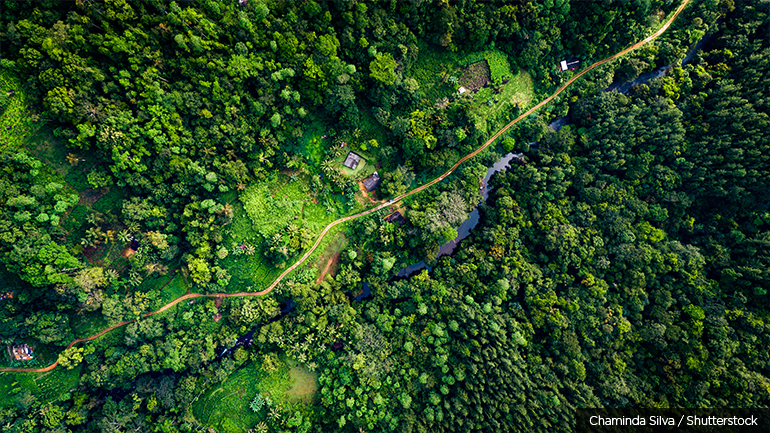
Program Summary
This activity informs the planning and green design of transport infrastructure, smart forest landscape strategies, and related investment plans to minimize and mitigate forest fragmentation and degradation in Sri Lanka. The activity enhances collaborative relationships between transport and forest management agencies and generates ready for application models and prototypes to build forest-and wildlife-friendly transport infrastructure. The activity also supports the implementation of the Country Partnership Framework (CPF) and Systematic Country Diagnostics (SCD), and informs the planning and implementation of two rural roads investment operations, Transport Connectivity and Asset Management Project and Inclusive Rural Connectivity and Development Project, with more than $400 M in total. Stakeholders of this activity include the Sri Lanka Ministry of Highways, Ministry of Public Administration, Provincial Councils and Local Government, Road Development Authority, National Planning Department of the Ministry of Finance, National Physical Planning Department, National Building Research Organization (NBRO), Disaster Management Center, Ministry of Wildlife and Forest Resources Conservation, Forest Department, and Department of Wildlife Conservation, Irrigation Department and Central Environmental Authority.
Challenge
Sri Lanka is exceptionally rich in biodiversity and is one of the 36 global biodiversity hotspots. In the beginning of the 19th century, Sri Lanka's forest cover was estimated at up to 70% of the total land area, and has since steadily decreased to only 29 percent in 2017. The Government of Sri Lanka (GoSL) has committed to maintaining healthy ecosystems and pursuing carbon neutral and climate-resilient development. However, conflict between conservation and development is a constant threat to the country’s forest landscapes. Therefore, the country’s ambitious development objectives require more informed and upstream planning to avoid or minimize negative impacts on ecosystems. With increasing risk of fragmentation and pressure on existing forest landscapes, comprehensive data and a landscape approach is needed to inform the development planning framework.
Approach
The proposed activity will support the GoSL in introducing an integrated land use approach to better plan and implement transport infrastructure. The activity will focus on the following three areas:
- Adopting an integrated landscape approach to transport infrastructure planning and informing forest-smart development policy.
- Conducting a country-wide diagnostic assessment of ongoing practices and identifying areas for improving transport infrastructure This includes planning investment activities in the forest and transport sectors, and identifying opportunities for forest-smart infrastructure prototypes, nature-based solutions, and maintaining habitat connectivity.
- Capturing and disseminating knowledge and best practices for planning and implementing forest-smart transport infrastructure.
In addition to contributing to the World Bank’s CPF and SCD I Sri Lanka, these activities will contribute to the preparation and implementation of two national programs:
- Forestry Sector Master Plan 2021-2030
- A national program to develop 100,000 kilometers of rural roads.
Results
- Environmental and Climate Resilience Assessments of Transport Network in Sri Lanka completed.
- Training materials and training of the stakeholders conducted.
- Sri Lanka’s Country Partnership Framework informed on the approach.
- Technical Code of Conduct on Smart Green and Resilient Infrastructure (CoC) prepared jointly with the stakeholders, it’s implementation mechanism and stakeholders’ individual roles outlined.
- Two ongoing transport investment operations with more than $400 M in costs informed with the approach, Road Development’s Authority commitment to use the CoC in its National Roads’ Masterplan for construction of new and rehabilitation of the existing roads over the next 10 years.
- More than a dozen of Governmental agencies, Universities, NGOs convened and their roles and inputs into the CoC implementation identified.